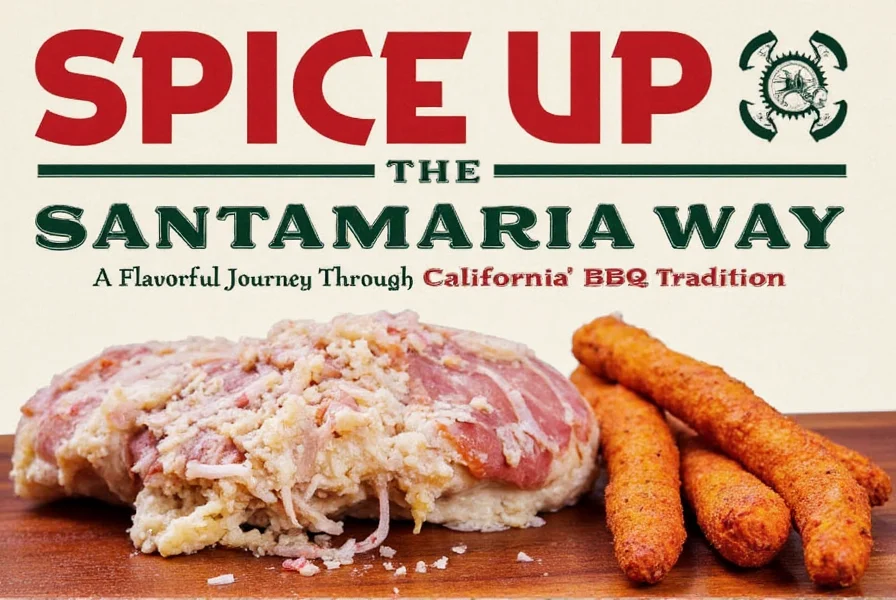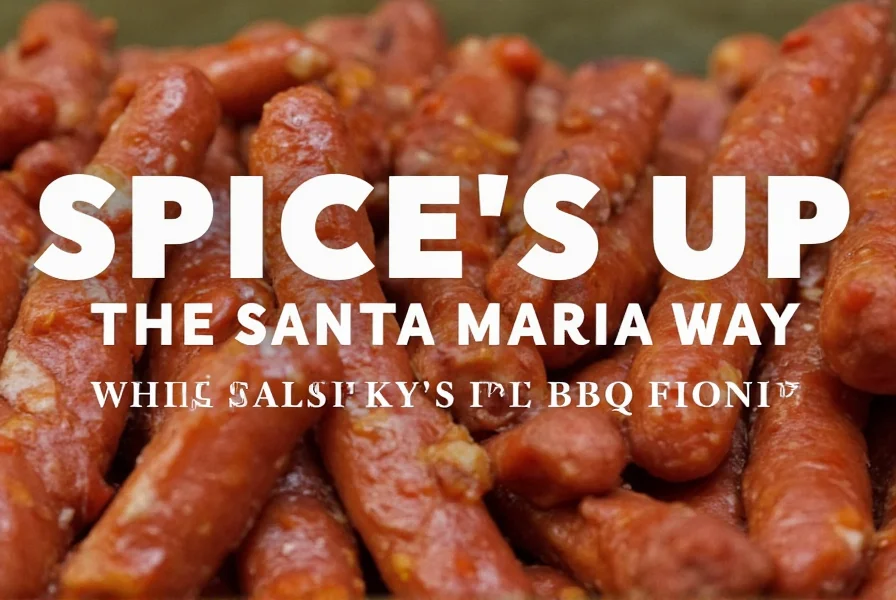Spice It Up the Santa Maria Way: A Flavorful Journey Through California’s BBQ Tradition
Table of Contents
- Introduction to Santa Maria-Style BBQ
- Roots of a Regional Tradition
- The Magic of Santa Maria-Style Seasoning
- How to Grill Like a Santa Maria Pro
- Spice Buying Guide: Must-Have Ingredients
- Simple Recipes to Try at Home
- Perfect Pairings: Sides, Wines & More
- Conclusion: Keep It Smoky, Salty & Simply Delicious
Introduction to Santa Maria-Style BBQ
If you’ve ever taken a drive through California’s Central Coast, especially near the town of Santa Maria, you might have smelled something magical wafting from backyard barbecues. That aroma? It’s the unmistakable scent of tri-tip roasting slowly over red oak, seasoned with a simple but mighty spice rub.
Santa Maria-style BBQ isn’t just about meat—it's a culinary tradition born in ranch country, rooted in simplicity, and elevated by bold flavors. Whether you’re an amateur griller or a seasoned pitmaster, diving into this style is like stepping into a flavor time capsule with modern-day deliciousness.

Roots of a Regional Tradition
The story of Santa Maria-style cooking starts with the vaqueros—Mexican cowboys who lived in the region during the 19th century. These skilled ranch hands grilled meats over open flames using local ingredients, creating what would later become a signature style for Central California gatherings.
In the 1950s, local restaurateurs began promoting this method, and it quickly gained popularity beyond the ranches. Today, it’s one of the few truly regional American barbecue styles, known not for heavy sauces but for fresh, robust seasonings and high-quality cuts cooked to perfection.
The Magic of Santa Maria-Style Seasoning
At the heart of Santa Maria-style BBQ lies its iconic seasoning blend. Unlike other barbecue traditions that rely on marinades or sauces, this approach leans on a dry rub that highlights the natural flavors of the meat—and a few key spices make all the difference:
- Coarse Salt: The backbone of the rub. Adds depth and enhances the natural juices of the meat.
- Black Pepper: Coarsely ground for texture and heat.
- Paprika: Adds color and a slight smokiness.
- Garlic Powder: For aromatic punch without overpowering the blend.
Some variations may include onion powder, chili flakes, or even a dash of cayenne for extra kick, but the classic version stays true to its roots: salty, peppery, and bold.

How to Grill Like a Santa Maria Pro
Grilling Santa Maria-style isn’t complicated, but there are a few golden rules to follow if you want to capture that authentic flavor:
- Use Tri-Tip: This cut is the star of the show. It’s flavorful, lean, and perfect for slow-roasting over low heat.
- Cook Over Red Oak: The type of wood matters! Red oak burns hot and clean, giving the meat a distinct earthy smoke flavor.
- Keep the Rub Simple: Less is more when it comes to seasoning. Let the meat shine!
- Don’t Crowd the Grill: Allow airflow for even cooking. Aim for indirect heat with some sear zones.
- Rest Before Slicing: This step ensures juicy, tender slices every time.
Spice Buying Guide: Must-Have Ingredients
Ready to stock your pantry with the essentials for Santa Maria-style seasoning? Here’s a quick breakdown of what to look for and why each ingredient plays a role in crafting that signature flavor profile.
| Ingredient | Flavor Profile | Recommended Brand | Best Use Case |
|---|---|---|---|
| Kosher Salt | Salty, clean | Morton Coarse Kosher | Main base for rub |
| Whole Black Peppercorns | Earthy, mildly spicy | Fresh Farms Gourmet | Freshly ground for texture |
| Smoked Paprika | Smoky, sweet | Diamond Crystal | Adds warmth and color |
| Garlic Powder | Pungent, savory | McCormick Pure | Enhances overall savoriness |
This guide will help both beginners and seasoned cooks select top-tier spices that deliver consistent results. Look for whole spices when possible (like peppercorns) so you can grind them yourself for maximum freshness.

Simple Recipes to Try at Home
Let’s bring it all together with a couple of easy recipes that highlight the Santa Maria way:
Tri-Tip with Classic Rub
- 1 tri-tip roast (2–3 lbs)
- 2 tbsp coarse kosher salt
- 1 tbsp freshly ground black pepper
- 1 tsp smoked paprika
- ½ tsp garlic powder
Mix all spices, then rub generously onto the meat. Let sit for at least 30 minutes while you prepare your grill. Cook over red oak or charcoal until medium-rare (about 130°F). Rest for 10 minutes before slicing against the grain.
Grilled Garlic Bread
- 1 baguette, sliced in half lengthwise
- ¼ cup unsalted butter, softened
- 2 cloves garlic, minced
- 1 tbsp chopped parsley
Mix butter, garlic, and parsley. Spread evenly over bread. Grill cut-side down until lightly charred. Slice and serve warm as a side.
Perfect Pairings: Sides, Wines & More
To round out your Santa Maria feast, consider these tried-and-true pairings:
- Salsas: Fresh tomato salsa, avocado crema, or chipotle-lime options elevate each bite.
- Vegetables: Grilled bell peppers, zucchini, or corn brushed with olive oil and salt complement the richness of the meat.
- Wine: Go for a Pinot Noir or Zinfandel from the Santa Barbara region—these wines balance acidity and fruitiness beautifully.
- Beer: A light lager or amber ale pairs well with the peppery notes in the rub.
Pro Tip: Set up a DIY taco station using thinly sliced tri-tip, warm tortillas, and a spread of toppings. It’s festive, flavorful, and encourages everyone to get involved!

Conclusion: Keep It Smoky, Salty & Simply Delicious
Santa Maria-style BBQ is more than just a meal—it’s a celebration of flavor, heritage, and community. With a handful of spices, quality meat, and a bit of patience, you can recreate this beloved California tradition right in your own backyard.
So fire up the grill, invite your friends, and embrace the magic of a good rub, a slow cook, and a perfectly rested tri-tip. After all, great food should taste like a story well told—and Santa Maria has one of the tastiest chapters around.










 浙公网安备
33010002000092号
浙公网安备
33010002000092号 浙B2-20120091-4
浙B2-20120091-4